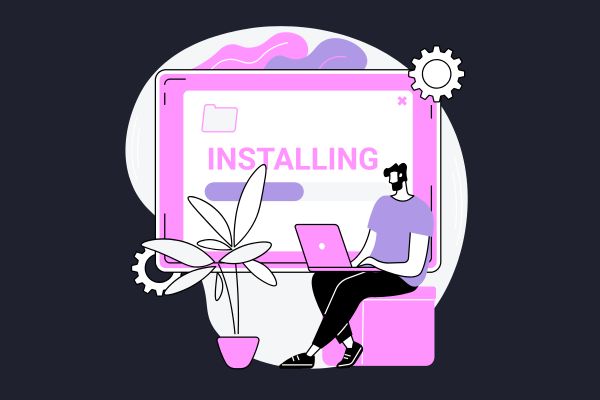Last Updated on February 11, 2025 by Becky Halls
In today’s hectic world, website speed can make or break your online success. Users expect lightning-fast load times, and search engines prioritize websites that provide a seamless browsing experience. But how important is page speed for SEO, really?
Short answer: It’s crucial. Page speed directly impacts user experience, search engine rankings, and conversion rates. A slow website can cost you rankings, traffic, and even sales.
In this article, we’ll explore why page speed is a key SEO factor, how search engines like Google evaluate it, and the best ways to optimize your site for better performance.
What Is Page Speed?
Before we dive into its impact on SEO, let’s define page speed.
Page speed refers to how fast the content on a webpage loads. It’s often confused with site speed, but there’s a difference:
- Page speed: Measures the load time of a specific page.
- Site speed: The average speed of multiple pages on a website.
Google measures page speed using metrics such as:
- Largest Contentful Paint (LCP) – How fast the main content loads.
- First Input Delay (FID) – The time it takes for a page to become interactive.
- Cumulative Layout Shift (CLS) – Measures visual stability as the page loads.
These Core Web Vitals are part of Google’s ranking factors, making page speed an essential aspect of SEO.
How Important Is Page Speed for SEO?
The speed of your website isn’t just a technical metric; it’s a critical SEO ranking factor.
1. Page Speed Directly Affects Search Rankings
Since Google’s Page Experience Update, website speed plays a significant role in rankings. Google rewards fast-loading websites and penalizes slow ones.
- In 2010, Google introduced page speed as a desktop ranking factor.
- In 2018, it became a ranking factor for mobile searches.
- Today, Core Web Vitals are used to evaluate the overall user experience.
This means a faster website = better SEO.
A study by Backlinko found that the average first-page result on Google loads in 1.65 seconds. If your website takes longer, your rankings could suffer.
2. Page Speed Impacts User Experience
Search engines prioritize user-friendly websites, and speed is a huge factor.
Consider this:
- 53% of mobile users leave a site if it takes longer than 3 seconds to load.
- A 2-second delay in load time can increase bounce rates by 103%.
- Websites that load within 2 seconds have an average bounce rate of 9%, while those that take 5 seconds have a 38% bounce rate.
A slow website frustrates visitors, leading them to exit before they engage with your content. Google tracks user behavior (such as bounce rate and dwell time) and lowers rankings for pages with poor user experience.

3. Page Speed Affects Conversion Rates & Revenue
A slow website doesn’t just hurt SEO—it affects your bottom line.
- Amazon found that every 100ms delay in load time cost them 1% in revenue.
- A 1-second delay can reduce conversions by 7%.
- A 3-second delay can lead to a 50% drop in revenue.
If you’re running an e-commerce store, a slow-loading checkout page can cost you sales. If you rely on ads or affiliate marketing, a slow page means fewer clicks and lower ad revenue.
So, how important is page speed for SEO? Bottom line? A fast website keeps users engaged and drives more conversions.
How to Measure Your Page Speed
Want to know how fast (or slow) your website is? Use these tools to check:
| Tool | Features | Price |
|---|---|---|
| Google PageSpeed Insights | Core Web Vitals, mobile & desktop analysis | Free |
| GTmetrix | Waterfall analysis, recommendations | Free & Paid |
| Pingdom | Performance monitoring, uptime tracking | Free & Paid |
| WebPageTest | Advanced site speed testing | Free |
| Lighthouse (Chrome DevTools) | Detailed audits, performance insights | Free |
Checking your page speed regularly can help you catch issues before they affect your rankings.
Best Practices to Improve Page Speed for SEO
If you’ve determined your website is running slow, don’t panic. Here are some quick fixes to improve page speed and boost SEO:
1. Optimize Images
- Use next-gen formats like WebP instead of PNG/JPG.
- Compress images with TinyPNG or ShortPixel.
- Use lazy loading to defer off-screen images.
2. Minimize HTTP Requests
- Combine CSS and JavaScript files.
- Remove unnecessary scripts and plugins.
- Use asynchronous loading to prioritize critical elements.
3. Enable Browser Caching
- Store static files locally to reduce server requests.
- Set expiration headers for CSS, JavaScript, and images.
4. Use a Content Delivery Network (CDN)
- CDNs store cached copies of your site on global servers, improving load times for users worldwide.
- Popular options: Cloudflare, KeyCDN, and StackPath.
5. Choose a Fast Web Host
- Shared hosting = slow speeds (avoid if possible).
- Consider VPS or dedicated hosting for better performance.
- Use managed WordPress hosting for built-in optimizations.
6. Minify CSS, JavaScript & HTML
- Reduce file sizes with MinifyCSS or Terser.
- Eliminate extra spaces and line breaks.
7. Reduce Redirects
- Every redirect adds an extra HTTP request, slowing down load times.
- Audit your site and remove unnecessary redirects.
8. Implement AMP (Accelerated Mobile Pages)
- AMP optimizes mobile pages for faster loading speeds.
- Google prioritizes AMP pages in mobile search results.
Final Thoughts on How Important is Page Speed for SEO
So, how important is page speed for SEO? It’s one of the biggest ranking factors and directly impacts user engagement, conversions, and overall website success.
A slow website will frustrate visitors, hurt rankings, and cost you money. But by optimizing page speed, you can:
- Rank higher in Google search results.
- Improve user experience and reduce bounce rates.
- Boost conversions and revenue.
Want to take your SEO game to the next level? Start by checking your website’s page speed today and implementing these best practices to ensure faster load times and better rankings.




